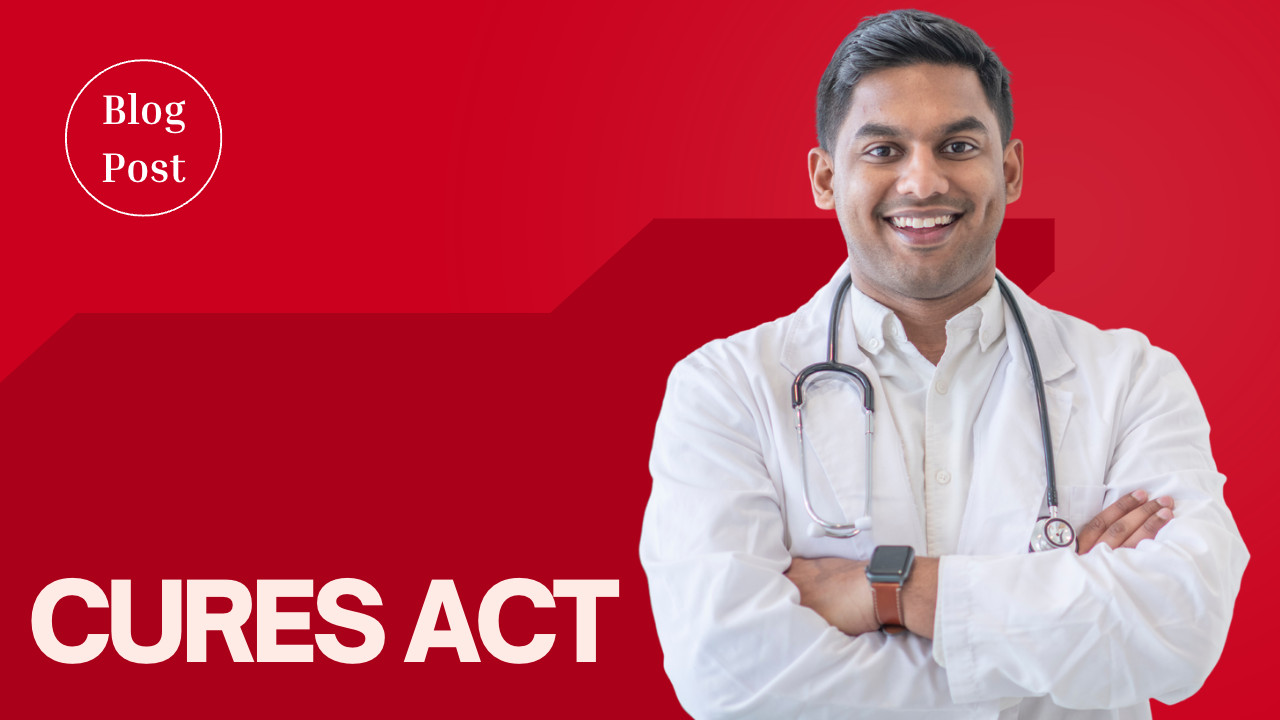The Cures Act and Its Impact on Healthcare Technology Advancements
Key Points
- The 21st Century Cures Act is a law that was passed by the United States Congress in December 2016. It aims to accelerate the development and approval of new medical treatments, including drugs, devices, and diagnostic tests.
- The Act increases funding for medical research and grants more autonomy to the Food and Drug Administration (FDA) in approving new treatments. It also provides more funding for mental health research, addiction treatment, and opioid abuse prevention.
- The law also changes how electronic health records (EHR) are used to make them more interoperable and give patients more control over their health data.
Securely preserving and providing access to patients’ data has been a significant challenge for healthcare organizations since the passage of HIPAA. The Health Insurance Portability and Accountability Act was designed to create a uniform set of standards that protected patients’ personal information from being disclosed without permission. The 21st Century Cures Act of 2016 was created to modernize and streamline drug and medical device access, support medical research, enhance mental health services, and address the opioid crisis. It recognizes the importance of choice and access for patients and providers and incentivizes medical innovation.

The 21st Century Cures Act
The signing of the Cures Act brought forth sweeping changes to the healthcare industry, with the Office of the National Coordinator for Health Information Technology (ONC) and the Centers for Medicare & Medicaid Services (CMS) introducing sets of rules to address interoperability, patient access, and information-blocking provisions.
These rules have set the new standard for all providers, payers, and technology vendors, ensuring that the healthcare industry can continue to provide quality care and services. With the Cures Act, providers, payers, and technology vendors can work together more cohesively, allowing for better patient care and a more extraordinary overall experience. These rules will undoubtedly bring about several changes in the healthcare industry.
In short, the Cures Act mandates Health and Human Services (HHS) to authorize regulations that disallow developers of certified EHR technology or health professionals from participating in any type of information blocking.
What Is Information Blocking?
Information blocking is the intentional or unintentional prevention of accessing, exchanging or using electronic health information (EHI) between healthcare providers and patients. This restriction of data can be seen in various ways, including technological barriers that impede the sharing of information, contractual arrangements that disallow the sharing of EHI, or practices that make the sharing of information financially and logistically burdensome.
The consequences of information blocking can be far-reaching and damaging, resulting in reduced patient care quality, amplified healthcare costs, and impeded innovation. The 21st Century Cures Act requires healthcare providers and vendors to disclose any information-blocking activities to combat this issue. At the same time, the Health Information Technology for Economic and Clinical Health (HITECH) Act provides measures for preventing the occurrence of information blocking.
In summary, information blocking is a common but harmful practice in the healthcare sector, preventing the access, exchange, and use of electronic health information.
What Is Electronic Health Information?
Electronic health information (EHI) is a digital representation of the physical health of an individual. It includes lab results, medical histories, patient records, and more. Utilizing this information allows healthcare providers to make informed decisions about a patient’s care, aiding in disease prevention, diagnosis, and treatment. Moreover, it helps to ensure that the patient receives quality care with minimal errors or miscommunication.
Electronic health information (EHI) encompasses a broad spectrum of data related to:
- An individual’s physical and mental health
- The provision of healthcare services to them and payments for services rendered
- Past, present, or future physical health or condition of an individual
Healthcare providers can make more effective decisions regarding diagnosing and treating patients by providing access to information. Furthermore, EHI can aid in preventing medical errors and help healthcare providers analyze trends in the healthcare sector.
How Can Your Organization Take Advantage of the Cures Act?
The Cures Act allows organizations to take advantage of the many benefits of adhering to the legislation’s regulations. Organizations can utilize the Cures Act by:
Ensuring That Their Systems Adhere to the Standards Set Forth by the Legislation
Organizations can take advantage of the Cures Act by ensuring that their systems adhere to the standards outlined in the legislation, providing access to electronic health information, and preventing any type of intentional information blocking. Due to the wide-ranging implications of this legislation, healthcare organizations need to familiarize themselves with the regulations and take advantage of the advantages of adhering to the Cures Act.
Organizations should also strive to develop secure frameworks for sharing patient data. This includes ensuring that systems are adequately secured against unauthorized access, and that data is encrypted whenever possible. These frameworks should streamline electronic health information exchange between healthcare providers, vendors, and other parties. Doing so will help reduce the burden of data entry and eliminate delays due to manual input.
Reviewing Your Consent and Authorization Processes
Organizations should review their consent and authorization processes to comply with the Cures Act. This includes ensuring that written consent and authorization forms are used for all requests for patient data, that any recommendations are addressed promptly, and that patients are informed of their rights related to the access and use of their data. Additionally, organizations should have systems to monitor consent and authorization forms and review patient authorization status changes.
Creating Strategies That Utilize EHI to Improve Patient Care
Organizations should also strive to create strategies that utilize EHI to improve patient care. This includes developing systems for identifying high-risk patients and providing them with personalized care plans, utilizing predictive analytics and machine learning to improve the accuracy of diagnoses, and using EHI to inform decisions regarding patient treatments. Access to electronic health information can also help improve patient outcomes by providing healthcare providers with more comprehensive insight into a patient’s medical history.
Documenting Policies, Procedures, and Processes Related to EHI
Organizations should also document policies, procedures, and processes related to electronic health information. This includes ensuring that all systems are appropriately secured against unauthorized access and document policies related to data handling. Additionally, organizations should have processes for managing data breaches and policies for responding to information requests. This includes clearly understanding who can access the data and ensuring that all parties involved are properly trained to handle sensitive information. Additionally, organizations should have procedures to ensure that all data is managed according to HIPAA standards.
How Can Your Organization Ensure Compliance With the Cures Act?
To be compliant with the 21st Century Cures Act, healthcare providers and vendors should take the following steps:
- Familiarize Yourself with the Cures Act: It is essential to understand the regulations of the Cures Act and how they apply to your organization.
- Identify and Address Information Blocking Practices: Take the time to assess any current information-sharing practices that could constitute information blocking, and take the necessary steps to address and resolve any issues.
- Develop Policies and Procedures: Develop policies and procedures that comply with the Cures Act, including procedures for disclosing information-blocking activities.
- Provide Transparency: Provide a clear and transparent explanation of your organization’s data access and sharing practices and the associated fees.
- Follow Regulations Related to Data Exchange: Ensure that your organization follows all regulations set out by the Office of the National Coordinator for Health Information Technology (ONC) and the Centers for Medicare & Medicaid Services (CMS).
- Monitor and Audit Systems: Monitor and audit your systems regularly to ensure that the Cures Act is followed and any issues are identified and addressed quickly.
- Designate a Point of Contact: Designate a point of contact within your organization responsible for ensuring compliance with the Cures Act.
Complying with the Cures Act is not a one-time affair; it requires continuous attention, knowledge, and expertise to achieve and maintain compliance over the long term. Establishing a system of sound checks and balances is essential for ensuring ongoing reliability and accuracy within your organization’s data systems. By taking the steps outlined above, organizations can ensure that they are compliant with the Cures Act and can provide high-quality, secure, and accurate healthcare services.
Wrap Up
The 21st Century Cures Act is a crucial US federal legislation that facilitates the exchange of electronic health information (EHI) between healthcare providers, vendors, and patients. It addresses information blocking by requiring all parties to disclose any activities that impede the sharing of EHI. By doing so, the Cures Act promotes better quality care and improved outcomes for patients. By providing incentives to healthcare providers that leverage technology and innovation, the Cures Act has the potential to revolutionize the healthcare industry. As this innovative legislation continues to evolve, healthcare providers and patients can benefit from improved care and access to EHI.
Contents
- 1 The Cures Act and Its Impact on Healthcare Technology Advancements
- 2 The 21st Century Cures Act
- 3 What Is Information Blocking?
- 4 What Is Electronic Health Information?
- 5 How Can Your Organization Take Advantage of the Cures Act?
- 5.1 Ensuring That Their Systems Adhere to the Standards Set Forth by the Legislation
- 5.2 Developing Secure Frameworks to Share Patient Data and Streamline the Exchange of EHI
- 5.3 Reviewing Your Consent and Authorization Processes
- 5.4 Creating Strategies That Utilize EHI to Improve Patient Care
- 5.5 Documenting Policies, Procedures, and Processes Related to EHI
- 6 How Can Your Organization Ensure Compliance With the Cures Act?
- 7 Wrap Up



